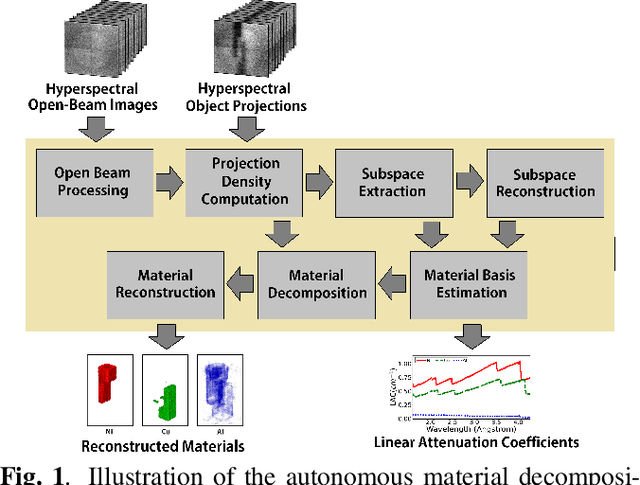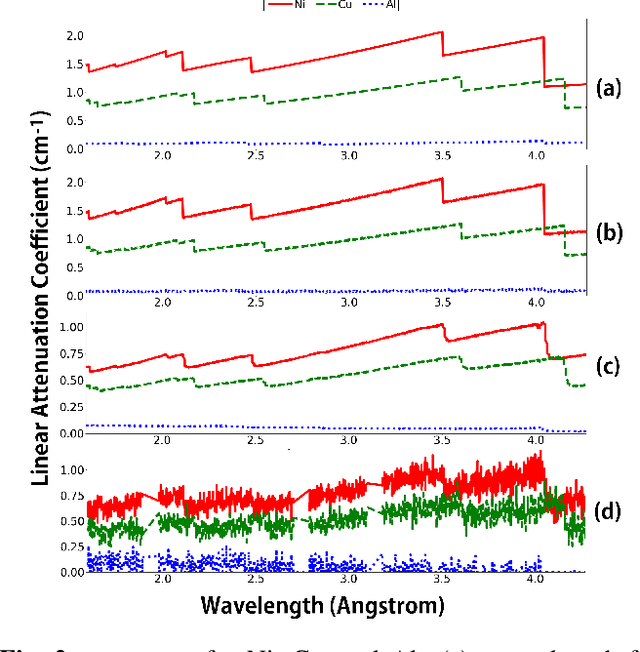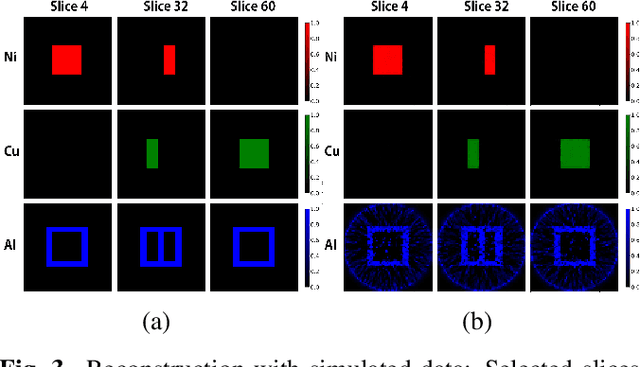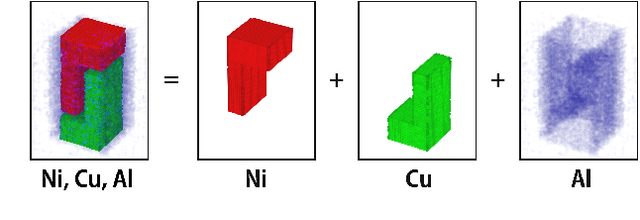Autonomous Polycrystalline Material Decomposition for Hyperspectral Neutron Tomography
Paper and Code
Feb 27, 2023



Hyperspectral neutron tomography is an effective method for analyzing crystalline material samples with complex compositions in a non-destructive manner. Since the counts in the hyperspectral neutron radiographs directly depend on the neutron cross-sections, materials may exhibit contrasting neutron responses across wavelengths. Therefore, it is possible to extract the unique signatures associated with each material and use them to separate the crystalline phases simultaneously. We introduce an autonomous material decomposition (AMD) algorithm to automatically characterize and localize polycrystalline structures using Bragg edges with contrasting neutron responses from hyperspectral data. The algorithm estimates the linear attenuation coefficient spectra from the measured radiographs and then uses these spectra to perform polycrystalline material decomposition and reconstructs 3D material volumes to localize materials in the spatial domain. Our results demonstrate that the method can accurately estimate both the linear attenuation coefficient spectra and associated reconstructions on both simulated and experimental neutron data.
 Add to Chrome
Add to Chrome Add to Firefox
Add to Firefox Add to Edge
Add to Edge